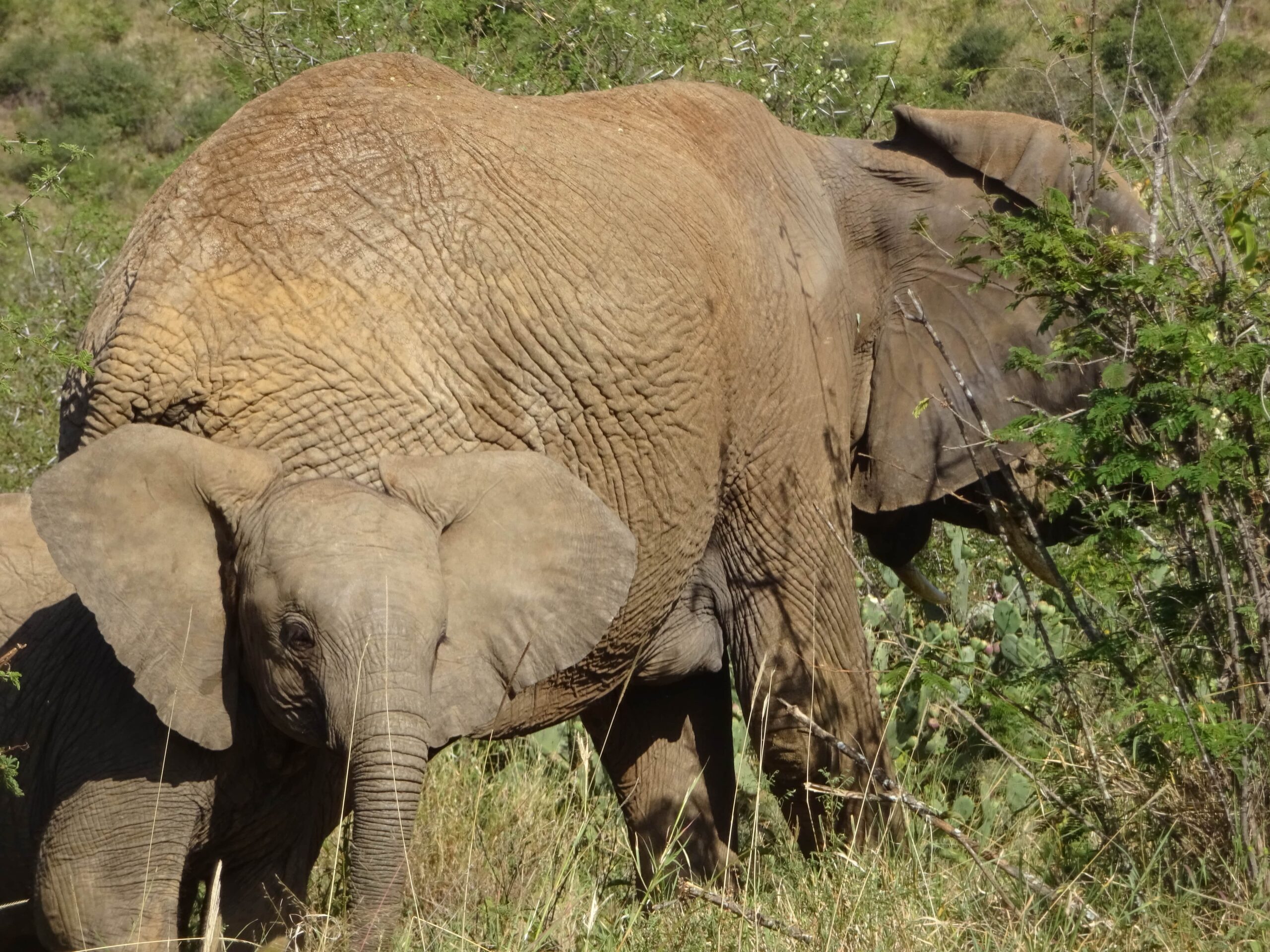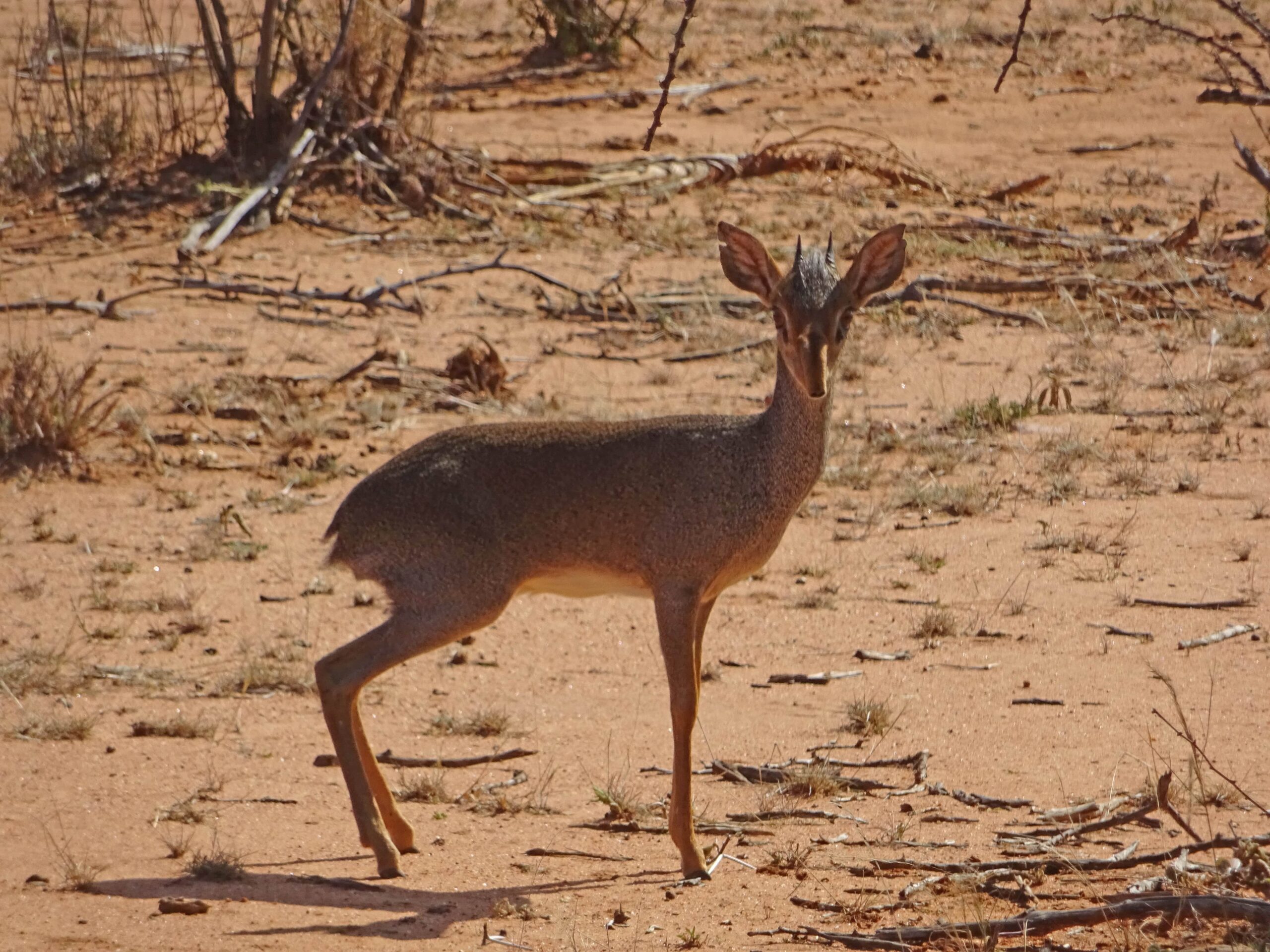Gone one, gone all: Without Africa’s large herbivores, a woody vine could threaten the biodiversity of savanna plant communities
The African savanna supports one of the world’s last intact large-mammal communities. Savannas also are home to a diverse array of plant species, but human-driven declines in animal populations could disrupt the balance of both plant and animal species in this iconic ecosystem, according to a study featured on the Oct. 12 cover of the Proceedings of the National Academy of Sciences.
Princeton University-led researchers found that when herbivores — particularly large animals such as giraffes and elephants — are no longer present, a dense, fast-growing type of plant known as lianas rapidly take over local plant communities.
Lianas are woody vines most common in tropical forests (think: Tarzan swinging through the trees) that climb trees in search of the sunlight above the forest canopy. Lianas are often described as “infesting” the trees they climb because of their tendency to smother them. In rainforests, lianas are known to influence the abundance and distribution of trees. Lianas are relatively scarce on the African savanna, however, and relatively little is known about how the plants interact with other plants, or how animals interact with lianas.


The study authors wanted to know what would happen to plant communities if different classes of herbivores were excluded from the landscape and no longer present to keep lianas in check. Working at the Mpala Research Centre in Kenya — of which Princeton is managing partner — the researchers constructed a series of long-term “exclosure” experiments that prohibited access to different herbivores depending on their size, from elephants down to the Chihuahua-sized antelopes known as dik-diks. When herbivores were excluded, lianas rapidly increased in number and size, smothering trees and stunting their growth and reproduction, the researchers reported.


These findings coincide with the acceleration of human-mediated changes in the distribution of species, said co-first author Tyler Coverdale, a postdoctoral fellow at Harvard University, worked on the project as a Ph.D. candidate at Princeton in the research group of senior author Robert Pringle, a professor of ecology and evolutionary biology and associated faculty in Princeton’s High Meadows Environmental Institute (HMEI), which supported the study. On the African savanna, those changes are driven largely by the displacement of large animals by agriculture and poaching,
“We conclude that savannas may be more vulnerable to harmful liana infestation than previously thought, particularly if the extinction of large wild herbivores continues to accelerate,” Coverdale said. “I think this is ultimately a story about how human impacts can cause ecosystems to change in unexpected ways, and how we need to do better to understand and predict those changes so we can mitigate them.”
Co-first author Ryan O’Connell, a graduate student at Duke University who graduated from Princeton in 2017, initiated the study for his senior-thesis research advised by the paper’s joint senior author, Corina Tarnita, a professor of ecology and evolutionary biology and director of Princeton’s Program in Environmental Studies. The study was designed and initially carried out by O’Connell, Coverdale, Tarnita and Pringle.


The first type of exclosure the researchers studied excluded all herbivores; the second type allowed only dik-diks; the third type excluded megaherbivores such as giraffes and elephants, but permitted entry to small and mid-sized herbivores such as impala and zebra; and the fourth type of exclosure plot had no fences, allowing entry to all herbivores. The researchers found that the abundance of lianas and the severity of liana infestation were lowest in the unfenced plots and increased incrementally as more — and larger — herbivores were excluded.
Because a subset of the exclosures were constructed in different years, the researchers also were able to compare eight- and 17-years-worth of data, finding that liana infestations became progressively more severe as herbivores were excluded for longer periods of time. The researchers also modeled the long-term implications of liana infestation and found that, without herbivores, there are two possible outcomes: either lianas will coexist with trees, or replace them.


But the fact that lianas proliferated in the absence of herbivores was, at first, a little puzzling because not all herbivores can eat the plants, Coverdale said. The species of liana that was the focus of this study produces a toxic latex that can be fatal to livestock if ingested, but it wasn’t known whether wild herbivores also are affected.
The team used camera traps and DNA metabarcoding — which identifies the plant species contained in a dung sample by their genetic code — to investigate which wild herbivores regularly ingested lianas and the proportion of their diet the plants made up. DNA metabarcoding found liana DNA in the feces of 15 wild herbivore species, especially browsers such as impalas, elephants, giraffes and dik-diks. In contrast, liana consumption by livestock appeared to be rare, even in browsers such as goats and camels.


However, even among wild browsers, lianas made up only a very small proportion of the diet — up to only 5.2% in dik-diks, the researchers found. This could have two possible explanations: either liana abundance is too low to be a main dietary component, or lianas are available to herbivores but are not a popular food item.
To test these alternatives, the researchers transplanted large lianas from inside the exclosure plots to trees in openly accessible areas to test whether herbivores would eat them. After only 10 days, about 50% of the transplanted lianas had been consumed, showing that wild herbivores do readily eat lianas when they are available. Camera-trap footage showed that browsers such as impala, elephants and giraffes were the main consumers.
One of the strengths of the project was that the researchers attacked the problem from multiple perspectives, Pringle said.
“The paper brings together experiments and theory, field and laboratory data, and altogether it’s a really nice example of collaborative synergy brought to bear on an important problem,” he said. “It’s a complex system, but by using these various approaches in concert, we were able to pick it apart and derive some very elegant insights about how it works.”
Having determined that the removal of wild herbivores would disrupt the plant community, the researchers next wondered what would happen if wild herbivores were reintroduced.
In 2017, after 18 years of herbivore exclusion, the fences surrounding some of the exclosure plots were removed, simulating the reintroduction of herbivores after years of local “extinction.” Before the fences were removed, lianas covered approximately 50% of the canopy of any given tree inside the enclosure, but within two months of animal access the density of lianas was almost halved. This finding offers hope that, at least in some cases, ecological degradation can actually be reversed, Coverdale said.
“Part of what makes our findings so alarming is that — over just a few years — lianas came to dominate an otherwise healthy, intact ecosystem,” Coverdale said. “The silver lining in this case is that it appears that liana infestation is easily avoidable and reversible. To avoid the worst outcomes we documented, we need to preserve wild herbivores where they are and restore them where they’ve disappeared.”


Co-authors of the study from Princeton also include Matthew Hutchinson and Amanda Savagian, former and current graduate students, respectively, in ecology and evolutionary biology, and Tyler Kartzinel, a former postdoctoral fellow in the Pringle Lab who is now the Peggy and Henry D. Sharpe Assistant Professor of Environmental Studies at Brown University.
Other co-authors included Todd Palmer, an associate professor of biology at the University of Florida; Jacob Goheen, a professor of zoology and physiology at the University of Wyoming; David Augustine, a landscape ecologist with the USDA Agricultural Research Service; and Mahesh Sankaran, a researcher at the National Centre for Biological Sciences in Bangalore, India and lecturer at Leeds University.
The paper, “Large herbivores suppress liana infestation in an African savanna” was published Sept. 27 by the Proceedings of the National Academy of Sciences. This work was supported by the National Science Foundation, the American Philosophical Society, the Garden Club of America, Princeton University and the High Meadows Environmental Institute, the Universities of Florida and Wyoming, and a NatureNet Science Fellowship from The Nature Conservancy.




